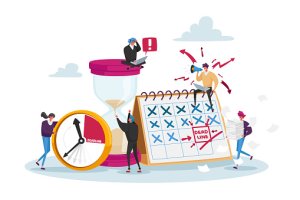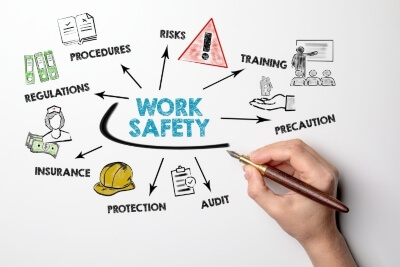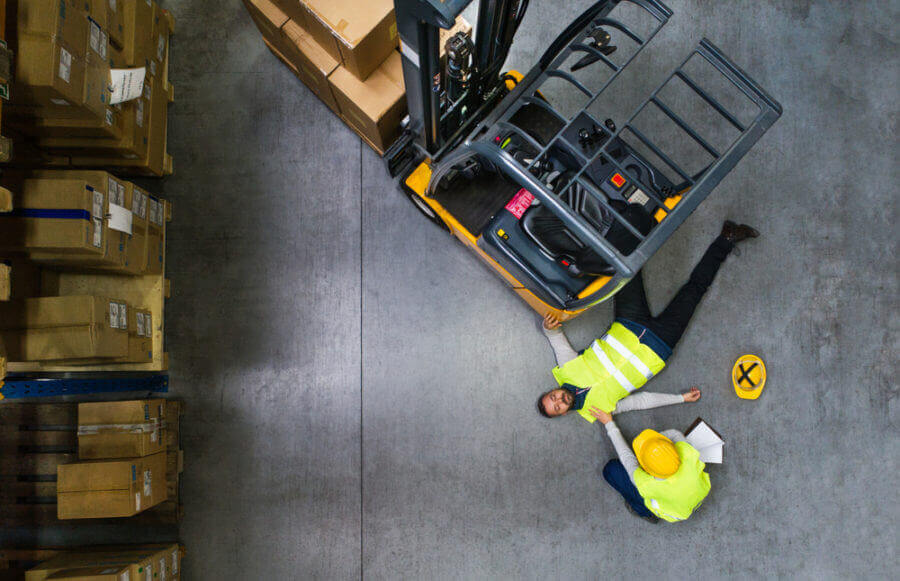Greetings, readers – I was asked to write a blog for your enjoyment – “Pressure to get work done.” Now when I saw the topic in my inbox, I’m not going to lie; I heard a bass line in the background – cue Queen and Bowie! Is it stuck in your head now? You’re welcome.

Feeling the pressure at work is not a new concept. Time is money, and both are always in short supply – but why is that a safety concern, you might as ask? Well, have you ever heard the term “eyes on task, mind on task”? Feeling the pressure to complete a task might start to be a distraction.
When we in the safety world talk about organizational priorities, we all say the same thing – safety first. But what I would like to explore here is how often that statement does not ring true for your workplace. I am not at all suggesting that your workplace isn’t a safe place per se, but I think there is the potential for safety to be bumped down the line of priorities depending on circumstance.
In our JHSC certification course, the introductory module required by the CPO speaks to why safety is important, from both the employer and the worker perspectives. For the employer, we cover engagement (preventing presenteeism), production (maintaining motivation), and quality of work (creating buy-in). For the worker, we cover morale (keeping you engaged), stress (keeping you productive), and a positive atmosphere (buying into the of the needs of the employer). When all those elements are present, it creates greater financial stability (extrinsic reward) and a positive contribution to society (intrinsic reward) for both parties involved. Those ideas are then rolled into the three parts of any sustainable safety culture: safety, productivity, and quality.
Now again, I will reaffirm what we, the safety people say, safety first! But now, let’s explore how those elements are not necessarily linear.
I would like the order of importance to go as follows in a perfect world. In the number one spot, we have safety. Worker safety is fundamental to who we are at IST; it is the most important aspect of any job. The phrase “if you have your health, you have everything” has started to carry weight throughout the global pandemic. The media are reporting society to be shifting social priorities. Google “The Great Resign” if you would like more details. You can always get another job; you can’t always get another life.
The next in line in our number two spot, I would like to see the quality. It doesn’t matter if your job is building or manufacturing, analyzing data, picking orders, or harvesting resources – doing the best job possible shows you take pride in your work. I used to work as a field technician in telecommunications as I had a habit of “gold plating” every job. Not only out of respect for the client but also because I was putting my name on the work done.
Coming in at third place, I would like to see productivity. The more work you can do with a set number of resources speaks to your efficiency at a task. Efficiencies are where profits are generated, and like anyone else, I like having money in my pocket. The only reason I put it third is that I want to ensure I am safe while working, doing the best job possible (personal pride even), and then consider how efficient I can be. I was always told, “you get good, then you get fast.”
Now, if you are still with me this far, I think you have picked up on my rose-colored lenses I suggest we all look through. My order mentioned above is for my perfect world, which is not everyone else’s reality. There are times that I see things have been reversed – production, quality, worker safety – enter pressure at work. Today, I am seeing more and more companies try to find efficiencies wherever possible, and I can’t blame them. Inflation is up; staffing shortages are rampant, infection control measures have fundamentally changed how some businesses operate. I get it, and I am totally on board – as long as worker safety isn’t bypassed to meet those targets.
The pressure we feel at work to increase productivity can come from many sources and take many forms. Still, for the sake of structure, I’ll lump them into three categories: organizational pressure, self-imposed pressure, and externally generated pressure.
Organizational pressure can be a considerable influence on a worker. Targets and expectations are how we manage performance, but unless customized, it can run the risk of expecting a worker to produce faster than they can safely do. For example, I have seen postings for positions on company doors looking for “runners” to aid in curbside pickup. On the surface, it makes sense, only until you watch the staff literally running in the snow-covered parking lot, clearly violating OHSA S. 28(2)(c). I find it interesting that the role is executed exactly as advertised. I have seen supervisors push organizational expectations and targets to the point where workers ignore the pain and minor injuries – I have even seen someone ignore the symptoms of a stroke for fear of letting down their employer. If I ask each one of you if there has been a time where you felt you had no choice but to keep working past your scheduled shift, or past a little bit of pain, came to work while sick, or even faster than you felt safe to do so – I am sure you have, and that’s because you felt organizational pressure.
Self-imposed pressure comes from within. We set our goals in our heads, striving to achieve or exceed them. Being a hard worker is something that I personally feel is part of my identity, and I know I am not alone. I can come from taking on too many tasks, not learning how to balance your obligations, not planning, and sometimes not saying no. We already agree that resources (time and money) are in short supply for organizations, but it goes the same for workers as well. When we overcommit, do not budget our time, or underestimate workloads, we self- generate pressure on ourselves. When resources are short, and since we “know” what we personally can do safely, corners tend to get cut, and sometimes our well-being is on the chopping block; like anything else related to people, it’s messy. It’s hard for workers to recognize that we, in fact, are causing the problem necessarily. Externally generated pressure is what comes from outside our organization. You can have the most balanced approach to safety, quality, and productivity – but then come the outside world’s demands. Maybe it is to compete in the marketplace, do a client a favor, or underestimate the demands of a project – sometimes your internal resources cannot handle it. So, what do you do – buckle down and get it done, making the impossible happen? Or do you disappoint a client or customer and end up on the wrong side of social media. Both options, to be honest, are not acceptable – but if you do make the impossible happen, what was the trade-off – quality or worker safety?
generate pressure on ourselves. When resources are short, and since we “know” what we personally can do safely, corners tend to get cut, and sometimes our well-being is on the chopping block; like anything else related to people, it’s messy. It’s hard for workers to recognize that we, in fact, are causing the problem necessarily. Externally generated pressure is what comes from outside our organization. You can have the most balanced approach to safety, quality, and productivity – but then come the outside world’s demands. Maybe it is to compete in the marketplace, do a client a favor, or underestimate the demands of a project – sometimes your internal resources cannot handle it. So, what do you do – buckle down and get it done, making the impossible happen? Or do you disappoint a client or customer and end up on the wrong side of social media. Both options, to be honest, are not acceptable – but if you do make the impossible happen, what was the trade-off – quality or worker safety?
In the end, like everything else, I think there can always be a balance found. Will there be times when you pick up a bit of speed? Will there be times when you have to slow down? Sure – but it’s give and take. Luckily for any organization with over 20 workers, there is a tool that can be used to regulate or mitigate the forces of pressure felt at work – your JHSC. For businesses under 20 workers they could utilize the H&S rep? When workers who know their capabilities and management who know how best to allocate those resources work in tandem, recognizing, assessing, controlling, and evaluating that pressure-induced (whatever the source) hazards your true potential can show. How an individual or a company handles the hard times, the high stress, high-pressure situations says a lot about their priorities. So, safety first, right?
Under pressure! cue Queen and Bowie…
Geoff Rowatt, CHRL
March 2022





